Fibonacci Sequence
The Fibonacci sequence is a series of numbers in which each number is the sum of the two preceding ones, usually starting with 0 and 1. The sequence goes: 0, 1, 1, 2, 3, 5, 8, 13, 21, and so on. The sequence was first described in the year 1202 by Italian mathematician Fibonacci in his book Liber Abaci.
Formula
The formula to find the nth term of the Fibonacci sequence is:
Fn = Fn-1 + Fn-2
Where Fn is the nth term, Fn-1 is the (n-1)th term, and Fn-2 is the (n-2)th term.
Properties of the Fibonacci Sequence
- The sequence starts with 0 and 1.
- Each subsequent number in the sequence is the sum of the previous two.
- The ratio of two consecutive Fibonacci numbers approaches the golden ratio, approximately 1.618, as the sequence progresses.
- The Fibonacci sequence has connections to various natural phenomena, such as the arrangement of leaves on a stem, the breeding patterns of rabbits, and the shape of galaxies.
Study Guide
To understand the Fibonacci sequence, follow these steps:
- Memorize the first few terms of the sequence: 0, 1, 1, 2, 3, 5, 8, 13, 21, 34, ...
- Understand the formula Fn = Fn-1 + Fn-2 and how it generates the sequence.
- Practice finding the nth term of the sequence using the formula.
- Explore the connection between the Fibonacci sequence and the golden ratio.
- Research real-world examples of the Fibonacci sequence in nature and art.
By following this study guide, you will gain a solid understanding of the Fibonacci sequence and its applications.
.◂Math Worksheets and Study Guides Fourth Grade. Calendar
Study Guide Calendar
Calendar  Activity Lesson
Activity Lesson Calendar Calculations
Calendar Calculations  Activity Lesson
Activity Lesson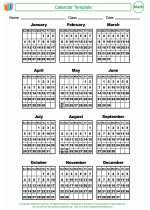 Calendar Template & Yearly Activities
Calendar Template & Yearly Activities  Activity Lesson
Activity Lesson February Calendar
February Calendar  Activity Lesson
Activity Lesson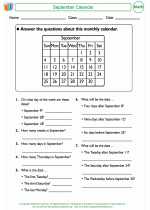 September Calendar
September Calendar  Activity Lesson
Activity Lesson Research - Days & Months
Research - Days & Months  Activity Lesson
Activity Lesson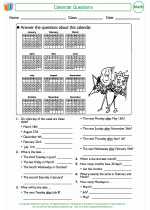 Calendar Questions
Calendar Questions  Worksheet/Answer key
Worksheet/Answer key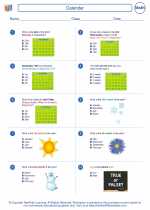 Calendar
Calendar  Worksheet/Answer key
Worksheet/Answer key Calendar
Calendar  Worksheet/Answer key
Worksheet/Answer key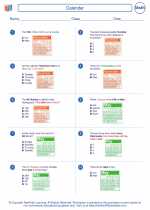 Calendar
Calendar 

 Activity Lesson
Activity Lesson
 Activity Lesson
Activity Lesson
 Activity Lesson
Activity Lesson
 Activity Lesson
Activity Lesson
 Activity Lesson
Activity Lesson
 Activity Lesson
Activity Lesson
 Worksheet/Answer key
Worksheet/Answer key
 Worksheet/Answer key
Worksheet/Answer key
 Worksheet/Answer key
Worksheet/Answer key

The resources above cover the following skills:
Knowledge of Measurement: Students will identify attributes, units, or systems of measurements or apply a variety of techniques, formulas, tools, or technology for determining measurements.
Applications in Measurement: Apply measurement concepts.
Determine start time, elapsed time and end time (Assessment limit: Use hour and half hour intervals).